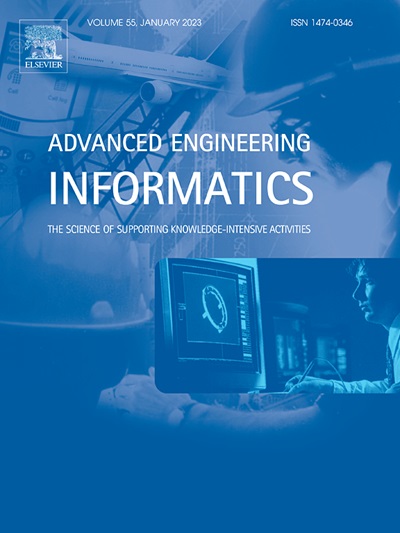The human-centric framework integrating knowledge distillation architecture with fine-tuning mechanism for equipment health monitoring
IF 8
1区 工程技术
Q1 COMPUTER SCIENCE, ARTIFICIAL INTELLIGENCE
引用次数: 0
Abstract
Human-centricity serves as the cornerstone of the evolution of manufacturing into Industry 5.0. Accordingly, modern manufacturing prioritizes both the well-being of human workers and their collaboration with production systems. Successful systems would be user-friendly and market-appropriate, effectively identifying and analyzing user needs. This study aims to integrate user requirements into the framework for equipment health monitoring (EHM). The proposed framework addresses issues related to insufficient training samples and variable-length data by combining an encoder-decoder architecture with an attention mechanism and a conditional generative adversarial network (EDA-CGAN). Furthermore, the authors utilize a teacher-student network to reduce model complexity through knowledge distillation (KD). To prevent negative knowledge distillation, this study incorporates user requirements using Kullback-Leibler divergence (KLD) to determine whether the teacher model would be fine-tuned. Consequently, we employ the explainable AI (XAI) to provide a clear and understandable explanation for the prediction results. Thus, the proposed human-centric EHM consisting of four modules: (i) the data augmentation (ii) the fine-tuning mechanism (ii) the equipment health prediction model (iv) the explainable AI (XAI). The authors employ these methods to uncover new research insights that are vital for advancing the methodological innovation within the proposed framework. To evaluate model performance, this study conducts an empirical investigation to illustrate the capability and practicality of the proposed framework. The results indicate that our algorithm outperforms existing machine learning models, enabling the implementation of the proposed framework in the real-world manufacturing environment to maintain equipment health.
以人为本是制造业向工业 5.0 演进的基石。因此,现代制造业既要优先考虑人类工人的福祉,也要考虑他们与生产系统的协作。成功的系统应具有用户友好性和市场适应性,并能有效识别和分析用户需求。本研究旨在将用户需求纳入设备健康监测(EHM)框架。建议的框架通过将编码器-解码器架构与注意力机制和条件生成对抗网络(EDA-CGAN)相结合,解决了与训练样本不足和数据长度可变相关的问题。此外,作者还利用师生网络,通过知识提炼(KD)来降低模型的复杂性。为防止出现消极的知识蒸馏,本研究利用库尔贝-莱布勒发散(KLD)将用户需求纳入其中,以确定是否对教师模型进行微调。因此,我们采用了可解释人工智能(XAI),为预测结果提供清晰易懂的解释。因此,所提出的以人为本的 EHM 由四个模块组成:(i) 数据增强;(ii) 微调机制;(ii) 设备健康预测模型;(iv) 可解释的人工智能(XAI)。作者采用这些方法来揭示新的研究见解,这些见解对于推进拟议框架内的方法创新至关重要。为评估模型性能,本研究开展了一项实证调查,以说明拟议框架的能力和实用性。结果表明,我们的算法优于现有的机器学习模型,从而能够在现实世界的制造环境中实施所提出的框架,以维护设备健康。
本文章由计算机程序翻译,如有差异,请以英文原文为准。
求助全文
约1分钟内获得全文
求助全文
来源期刊

Advanced Engineering Informatics
工程技术-工程:综合
CiteScore
12.40
自引率
18.20%
发文量
292
审稿时长
45 days
期刊介绍:
Advanced Engineering Informatics is an international Journal that solicits research papers with an emphasis on 'knowledge' and 'engineering applications'. The Journal seeks original papers that report progress in applying methods of engineering informatics. These papers should have engineering relevance and help provide a scientific base for more reliable, spontaneous, and creative engineering decision-making. Additionally, papers should demonstrate the science of supporting knowledge-intensive engineering tasks and validate the generality, power, and scalability of new methods through rigorous evaluation, preferably both qualitatively and quantitatively. Abstracting and indexing for Advanced Engineering Informatics include Science Citation Index Expanded, Scopus and INSPEC.
 求助内容:
求助内容: 应助结果提醒方式:
应助结果提醒方式:


